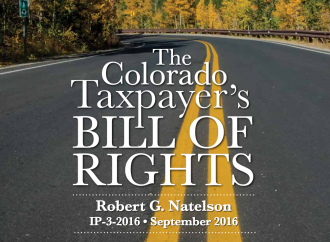2024 Property Tax Reform: The Choices Before Colorado Voters
- July 26, 2024


Increasing state spending as population grows assumes that larger populations require more government services. This may not always be the case, but it at least refrains from taxing people simply because they work harder.
READ MORE
Fred Holden (below) and Rob Natelson, both Senior Fellows at the Independence Institute, talk about the famous Colorado Taxpayer’s Bill of Rights in this interview.
READ MORE
Over two decades have passed since Colorado voters adopted The Taxpayer’s Bill of Rights in 1992. TABOR allows government spending to grow each year at the rate of inflation-plus-population. Government can increase faster whenever voters consent. Likewise, tax rates can be increased whenever voters consent. This Issue Paper analyzes TABOR’s effect on state government spending and taxes by examining three decades: The 1983-92 pre-TABOR decade; the first decade of TABOR, 1993-2002; and the second decade, 2003-12. The final decade included the largest tax increase in Colorado history, enacted as Referendum C in 2005. Decade-2 was also marked by increasing efforts to evade TABOR by defining nearly 60% of the state budget as “exempt” from TABOR.
READ MORE(May 2008.) Author: DISTRICT COURT, CITY AND COUNTY OF DENVER COLORADO PDF of full Paper Scribd version of full Paper THIS MATTER comes before the Court for a court trial, commencing on May 5, 2008. The Court took testimony, received exhibits, and heard argument from all parties. The evidence was closed, subject to this Court’s
READ MORE